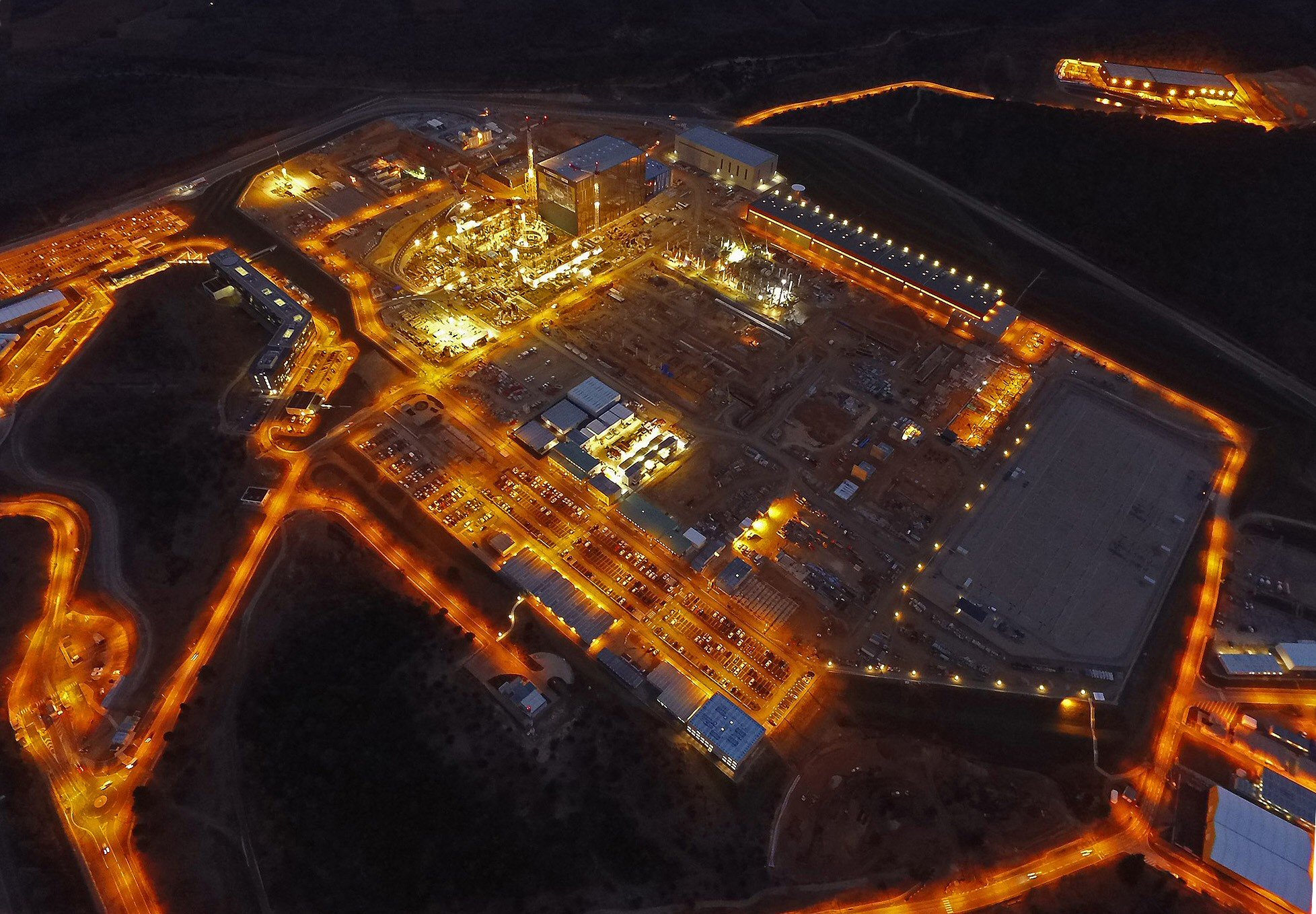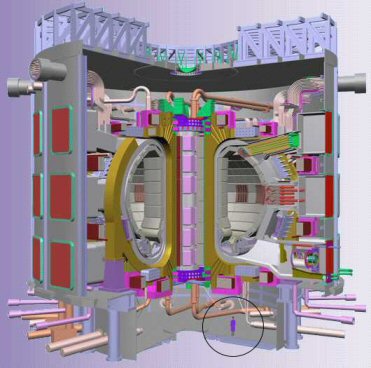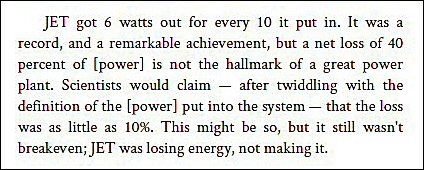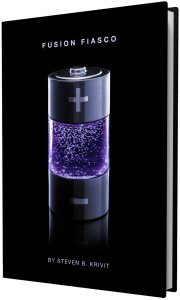
From the ITER Web site: “At nightfall, when buildings, work areas, roads and parking lots light up, the ITER site looks like an alien spaceport. Drenched in the yellow glow of sodium lights, with its cranes reaching for the sky, the Tokamak Complex is like a launch pad minutes before a shuttle’s departure; towering above, the Assembly Hall resembles a giant hangar for some mysterious spaceship bound for the confines of the galaxy.”
Jan. 19, 2017 – By Steven B. Krivit
Return to ITER Power Facts Main Page
On Jan. 12, 2017, New Energy Times published “The Selling of ITER,” which reported that the largest fusion research project in the world, the International Thermonuclear Experimental Reactor (ITER), may have been sold to the public and elected officials using misleading information. In a telephone interview on Jan. 18, Michel Claessens, the former head of communications for ITER, confirmed that the Jan. 12 New Energy Times ITER article is accurate.
Claessens said that he saw no errors, significant omissions, or misrepresentations in the article.
“On the contrary,” he said, “I read it with interest because I did not know that the input power of JET in 1997 was as high as 700 megawatts.”
Claessens sent an e-mail to New Energy Times on Jan. 16, 2017:
I read with interest your paper on fusion power. You are right to stress that we should be clear and define the terms that we use (especially if we want to maintain public trust). I am the former head of communications at ITER (before Laban Coblentz), and I always said that the ITER Web site does not use correct figures regarding “fusion power.” We can’t compare the input of 50 MW with the output of 500 MW because the former is electric and the latter is thermal. Also, I was told that the average electricity consumption on the site will be 110 MW with peaks of 600 MW during the shots.
The 1997 experiment at the Joint European Torus (JET) reactor in the U.K. has been reported by some fusion spokesmen and the news media as the best-ever fusion experiment. Previous news reports have stated that, in the JET experiment, 16 million Watts of power output were produced by 24 million Watts of power input, rather than the actual 700 million Watts of input power.
Claessens had worked for the European Commission before being recruited to ITER in 2011. In August 2015, he returned to Brussels to work for the European Commission again. He now provides policy support on the ITER project as part of the Directorate-General for Energy for the European Commission. He told New Energy Times that the estimated cost for ITER is now €22.6 billion ($24 billion).
The Jan. 12 New Energy Times article explains how some fusion spokesmen have hidden the real input power for the JET experiment and how they used the phrase “fusion power” in a misleading way when communicating with the public and elected officials.
“I like your argument about ‘fusion power’ and how we should be clearer about it,” Claessens said. “One of my concerns is that, if you go on the ITER Web site, they claim it will have a power gain ratio of 10 because it will produce 500 megawatts for an input power of 50 megawatts. But there is a big problem there because the input power is electric power and the output is thermal, so you cannot compare the two.”
I told Claessens that the problem is worse. The actual input power of “50 megawatts,” as claimed on the ITER Web site is not 50 MW electric: It is 50 MW thermal. When I conducted a survey among fusion physics professors in December 2016, a professor from the University of California at San Diego, who requested anonymity, explained this to me.
“To generate 50 MW of the power which goes into ITER as radio frequency waves and energetic neutral beams, you need to spend at least 150 MW electric!” the professor wrote.
A Dec. 24 e-mail from Laban Coblentz, the current head of communications for ITER, also confirmed this fact.
“The 50 MW requires roughly 150 MW of electrical input to the heating systems,” Coblentz wrote. “For a 400-second pulse, the output of 500 MW fusion power to 150 MW electrical power to the heating and current drive systems yields a factor of about three times more energy than is input to the H&CD systems.”
Coblentz did not say whether that 150 MW electrical input power included the electrical input power required for the magnetic subsystem. The fact that the 50 MW input was thermal, rather than electric, had been so deeply obscured by some ITER personnel that even Claessens had not known about it until I told him.
During my phone interview with Claessens, after confirming the distinctions between the terms “reactor,” “site,” and “facility,” I asked him about his first e-mail he had sent me. “Did you mean that the average consumption on the site will be 110 megawatts or the average consumption of the reactor will be 110 megawatts?”
“As I received the information from colleagues,” Claessens said, “that’s the average consumption, electric consumption, of the site, so including, all the subsystems, not just the reactor.”
In a follow-up e-mail, I asked Claessens about this again. He replied that he was not sure and needed to check with his colleagues. If the electrical input power for the heating systems is 150 MW, then Claessens was given incorrect information by ITER staff or management.
Misrepresentations were going on long before Claessens got there. In 1998, the ITER Web site said, “ITER will be the first fusion reactor to produce thermal energy at the level of a commercial power station.” Claessens was aware of this, and he told me that he had attempted to correct the public communications for ITER.
“While I was in Cadarache,” Claessens said, “I asked my colleagues to be a little bit more cautious and modest. I passed the message on to management. There are so many uncertainties, particularly because this is a research project and we don’t know the outcome yet. We still have to do the experiment. My predecessor when I arrived in 2011, Neil Calder, was very optimistic about fusion and ITER; he thought it could solve all the problems in the world.”
In this video and his slides, Calder behaves like an evangelist, portraying ITER as the solution to global climate and energy crises. His message was “The world must react — ITER is the reaction.” In his outreach program to other ITER promoters, he gave them incorrect information: “The energy coming out of ITER will be 10 times greater than the energy going in. Input power 50 MW – output power 500 MW.”
ITER’s actual input power could be as much as 600 MW. (Calder did not make energy claims in his slides, and he incorrectly used the term “energy.”) Claessens is not certain what the real projected power requirements and power gain factor are for the reactor. He intends to contact David Campbell, the director of science and operations at ITER, to get accurate information.
If ITER consumes 600 MW peak input power, and it produces 500 MW peak power, then it will produce no net thermal energy “at the level of a commercial power station.” In fact, the power coming out of ITER will not be greater than the input power. Instead, it will consume the equivalent of 1 million 100-Watt light bulbs.
This revelation about the real value for ITER’s input power explains why Coblentz told New Energy Times recently that the total amount of power produced by the reactor — accounting for all power input — was no longer important. He wrote that it was “completely irrelevant to the success of ITER.” Rather than concede that ITER likely will not achieve the publicly implied performance goal, given the misleading information — as revealed by New Energy Times — Coblentz, on behalf of ITER management, has changed the character of the stated goal to be a large-scale, publicly funded scientific experiment.





 By Steven B. Krivit
By Steven B. Krivit





